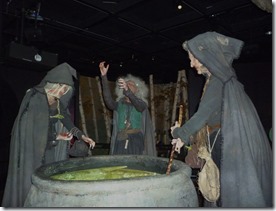Poison: Friend or Foe?
At the American Museum of Natural History in New York City is an exhibit called The Power of Poison. First we entered a section on Poison in Nature, where plants and animals may use poisons as a natural defense. For example, the golden poison frog from the Chocó Forest is highly toxic. It almost looks like a porcelain figurine until you see it breathing. Native humans use the frog’s toxin to make poison darts. This poison stops nerves from transmitting impulses. But don’t fear frogs; this particular species gets its toxicity from the diet it eats, likely beetles.
Plants have natural defenses, too. Think about poison ivy or other plants you touch that cause an allergic reaction. And some plants are so toxic that even the smoke from burning them can be harmful. So how can some animals eat toxic plants and not feel the effects? Howler monkeys eat toxic leaves, but they also eat clay that binds poisons.
The next section describes Poisons in Myth & Legend. Snow White, the witches of Macbeth, Emperor Qin, and the Mad Hatter are displayed. The latter doubtless got its name because hat makers were exposed to dangerous mercury levels during the manufacturing process. Some poisons can mimic death, hence the legend of Snow White and also Romeo and Juliet.
Villains & Victims talks about famous people like Cleopatra. How did she really die? And was Lucrezia Borgia an infamous poisoner like her reputation claims? Who are some famous authors who employed poisons in their tales? Agatha Christie mysteries, Sherlock Holmes, and Harry Potter are some of the stories mentioned.
Detecting Poison has a live demonstration. We moved past this to sit at the interactive displays at Poison by Accident to solve a mystery at three stations as to what had accidentally poisoned each victim. A family pet, a British sea captain named Captain Cook, and an owl were the victims. Clues were in sight for you to detect through observation at the scene. I got all three correct!
The most interesting section was Poison for Good to find cures for diseases. For example, a drug made from a Gila Monster’s venom is used to treat Type II diabetes. While yew tree needles can be deadly, a chemical found in the bark helps provide an anti-cancer medicine. Research is providing more treatments and hope for future cures.
Visit http://amnh.org/poison to learn more about the role of poisons in nature, human history, medicine, myth and legend.
View all the photos here: http://fw.to/00nuTlP










